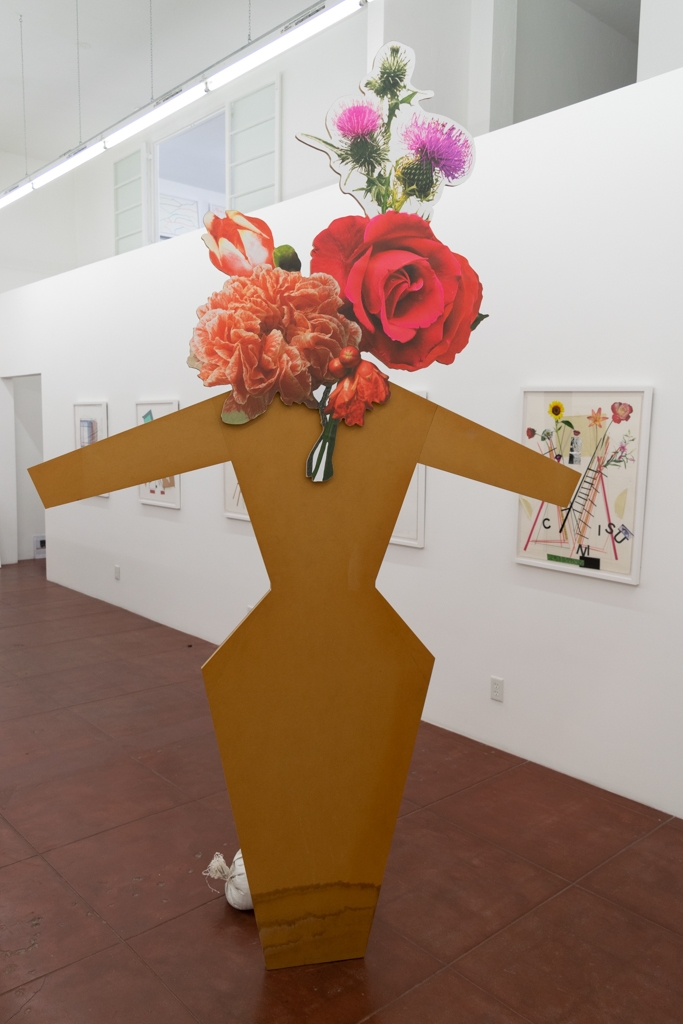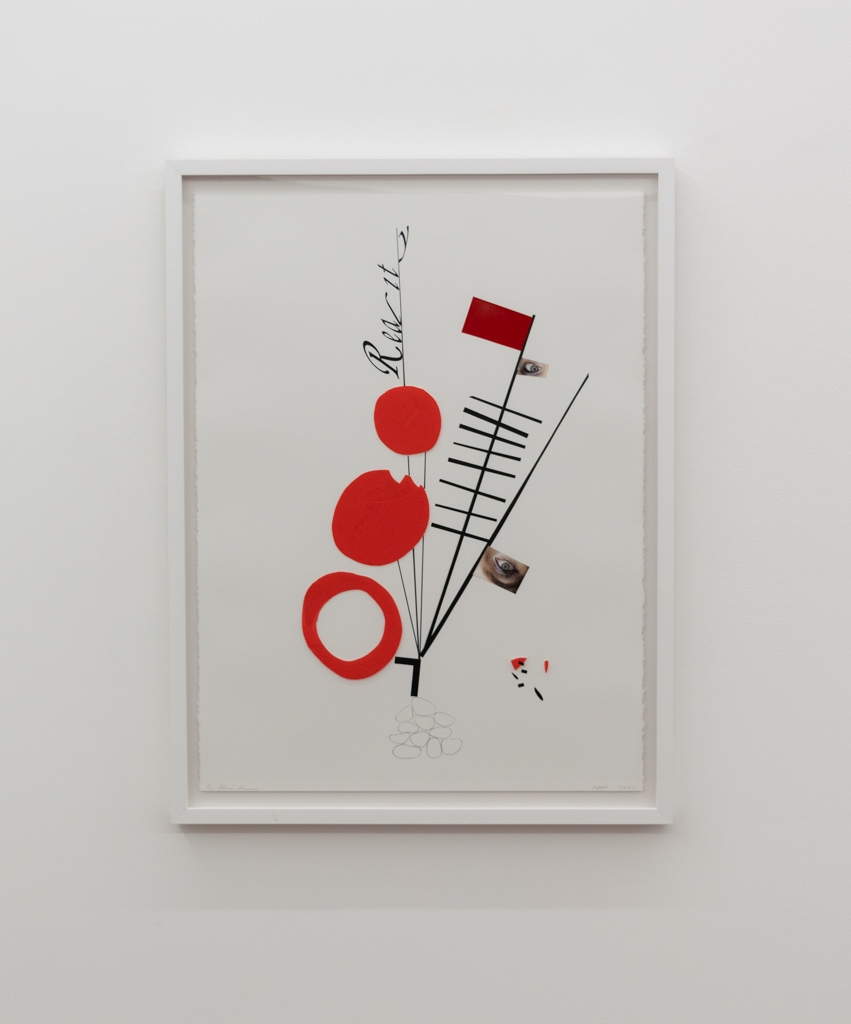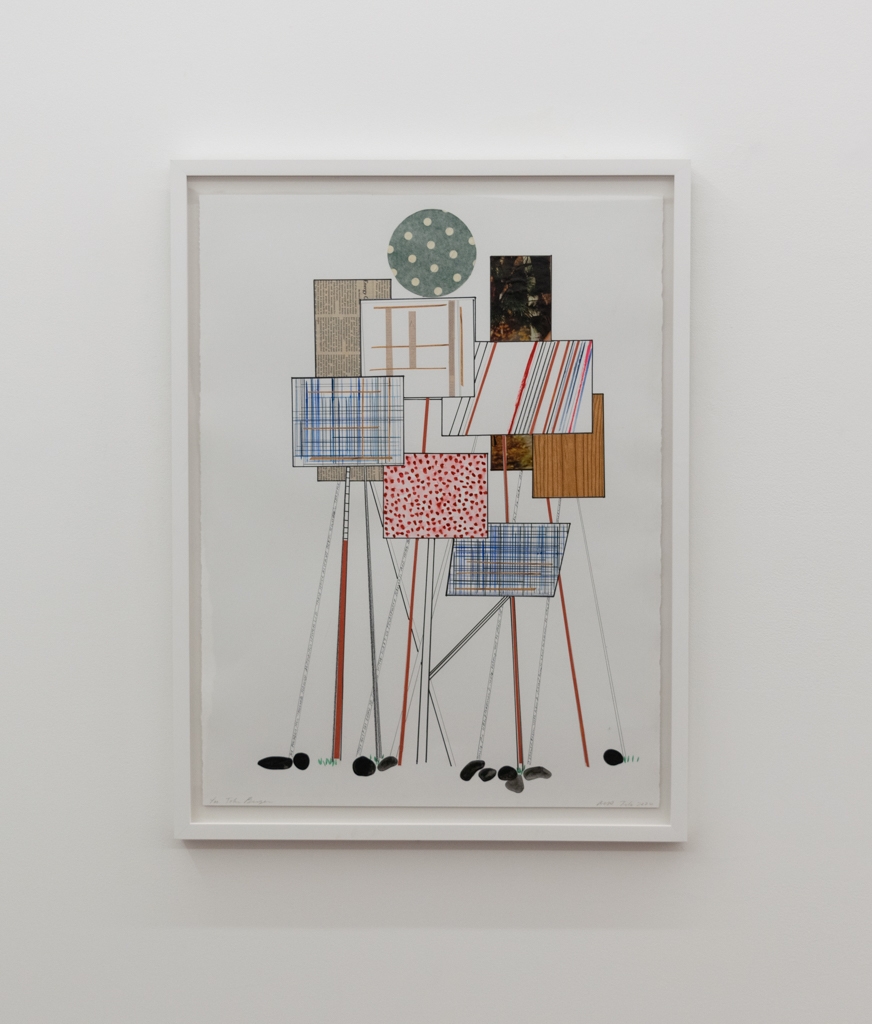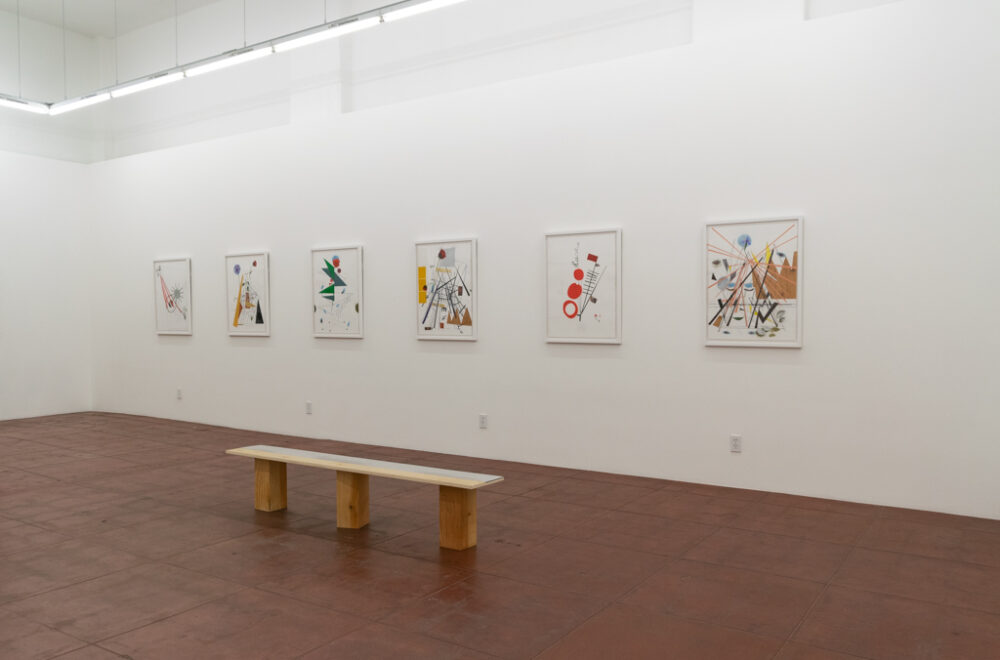A point of reference for Renée Petropoulos’ compelling and thought-provoking exhibition “Like a Street full of Friends: Studies for Speculative Monuments” at as-is.la is her 2014 public artwork installed in downtown Santa Monica: Bouquet (Between Egypt, India, Iraq, the United States, Brazil, Ethiopia & Mexico). This thin, 27-foot high towering sculpture has a giant bouquet of flowers (representing the different nations) extending from a spiraling representation of a faux concrete block wall that suggests the shape of Tatlin’s unbuilt Monument to the Third International (1919) on its frontside and a gridded mirror on the backside.

Bouquet (Flower Girl) by Renée Petropoulos. Image courtesy of Renée Petropoulos.
Although the majority of the pieces in the gallery are framed mixed-media works on paper, a mirrored wood and plexiglass bench and the companion to her Santa Monica public artwork, Bouquet (Flower Girl) (Between Libya, Scotland & United States), 2014, are included to help imagine three-dimensional versions of the proposed monuments. Each of seventeen framed works is dedicated to a writer that Petropoulos says changed her way of thinking. These include Gertrude Stein, Georges Perec, Leslie Dick, Eileen Myles, and Amiri Baraka, among others. Though not portraits in the traditional sense, they can be seen as a conversation between the artist and author where fragments of text, photographic flowers, and eyes, as well as drawn geometric shapes that suggest sculptural supports co-mingle on the paper. Each element for Petropoulos has a specific (though not stated) association with the author or author’s writings. While the diagrammatic collages are too frenetic to be realized as sculptures, they call to mind the monuments proposed by Russian Constructivists where the integrity of form was not dissuaded by the force of an internal dynamism.
The presence of Bouquet (Flower Girl) (Between Libya, Scotland & United States) helps audiences imagine how the works on paper could be realized as sculptures. In For Hannah A. Arendt (2020), a black triangle and a yellow trapezoid placed at a diagonal as well as two orange rectangular shapes could be seen as supports for a lattice of intersecting lines form a quasi-architectural structure. Growing out from this structure are photographic cutouts of a red rose and a purple lily of the Nile. How the light gray handwritten phrase “HOW THEY LIVED THEIR LIVES” that bisects the composition and the typeset words “is,” shown both right reading and reversed on opposite sides of the text would become three-dimensional forms is a complex undertaking.

For Chris Kraus (2020) by Renée Petropoulos. Image courtesy of Renée Petropoulos.
For Chris Kraus (2020) is a bit simpler. Here, Petropoulos balances an antenna-like arrangement of black lines and irregular red circular shapes upon a small arrangement of drawn ovals akin to a pile of stones. A deep-red rectangle, as well as two photographs of eyes, extend from an upside-down black “L” situated at the top of the pile. Expressively typeset along the uppermost line is the word “Reality.” It is not impossible to see this image in the landscape. For John Berger (2020) is a collage clustering rectangular signs placed in the ground, each containing a different abstract pattern or appropriated fragment of newspaper text or image. The work is an apt metaphor for different “Ways of Seeing” that was integral to Berger’s writings and reminiscent of the diversity of signs at current political protests.

For John Berger (2020) by Renée Petropoulos. Image courtesy of Renée Petropoulos.
Although Petropoulos has incorporated a select vocabulary or lexicon of shapes and symbols within these studies for monuments, she uses them in expansive and expressive ways. What she gleaned from the myriad authors is reflected within the collages as a poetic tribute to their influences on her. The works are lyrical as well as graphically sophisticated. Perhaps a key to understanding her motivations is Monument #1, 2013 a small mylar and paper sculpture placed on a shelf in the upstairs gallery. This piece is an homage to Tatlin, though Petropoulos has personalized the message asserting: We are here… You are here… I am here. Thinking about this when regarding the elegant installation that in many ways appears “like a street full of friends,” it is possible to enter into a dialogue with those who are absent. Petropoulos’ works memorialize these artists/authors, celebrating their effects and effects on her as abstracted speculative monuments that resonate beyond words.
Renée Petropoulos
Like a Street full of Friends: Studies for Speculative Monuments
as-is.la
November 1 – December 19, 2020


